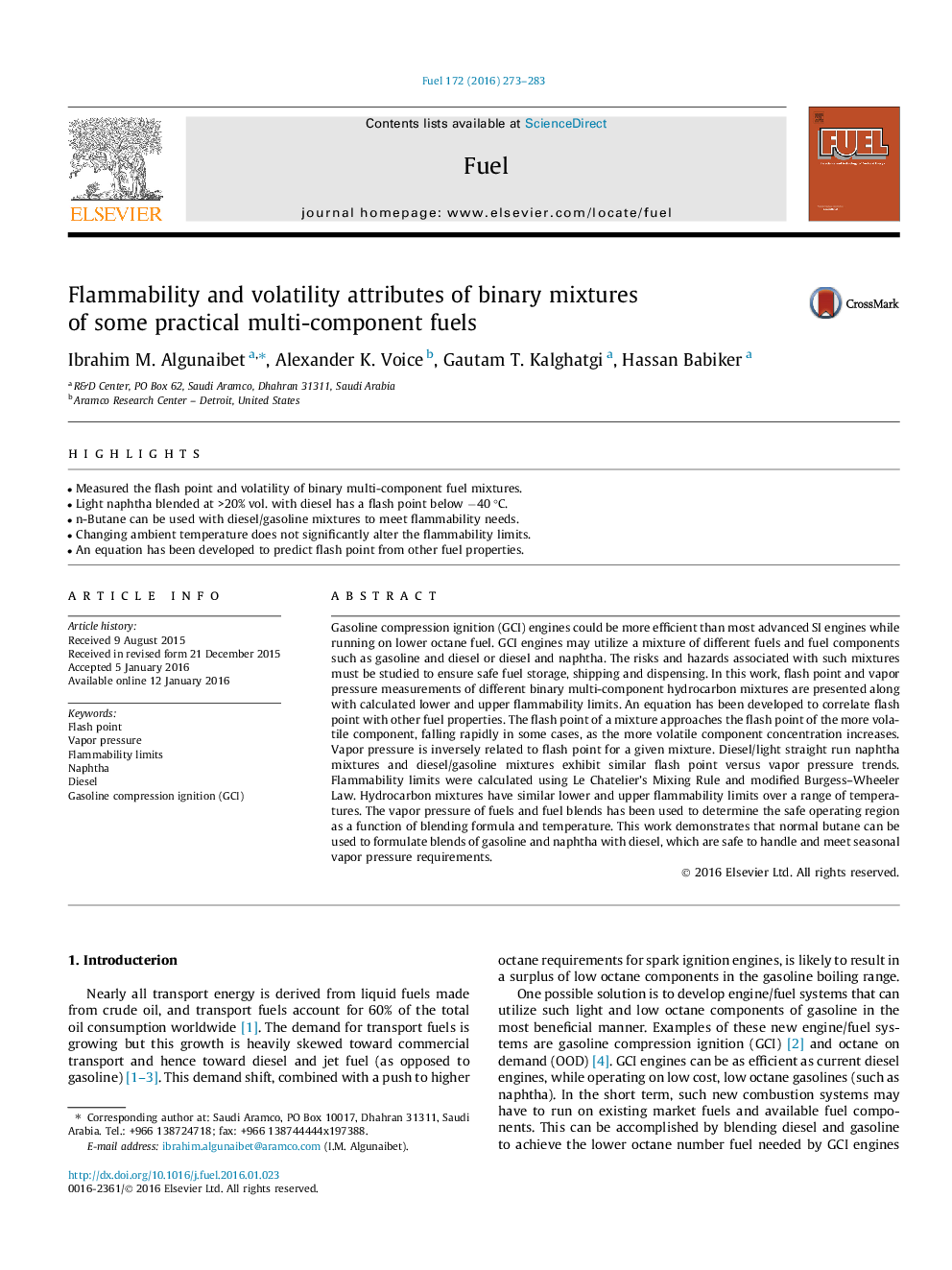| Article ID | Journal | Published Year | Pages | File Type |
|---|---|---|---|---|
| 205209 | Fuel | 2016 | 11 Pages |
•Measured the flash point and volatility of binary multi-component fuel mixtures.•Light naphtha blended at >20% vol. with diesel has a flash point below −40 °C.•n-Butane can be used with diesel/gasoline mixtures to meet flammability needs.•Changing ambient temperature does not significantly alter the flammability limits.•An equation has been developed to predict flash point from other fuel properties.
Gasoline compression ignition (GCI) engines could be more efficient than most advanced SI engines while running on lower octane fuel. GCI engines may utilize a mixture of different fuels and fuel components such as gasoline and diesel or diesel and naphtha. The risks and hazards associated with such mixtures must be studied to ensure safe fuel storage, shipping and dispensing. In this work, flash point and vapor pressure measurements of different binary multi-component hydrocarbon mixtures are presented along with calculated lower and upper flammability limits. An equation has been developed to correlate flash point with other fuel properties. The flash point of a mixture approaches the flash point of the more volatile component, falling rapidly in some cases, as the more volatile component concentration increases. Vapor pressure is inversely related to flash point for a given mixture. Diesel/light straight run naphtha mixtures and diesel/gasoline mixtures exhibit similar flash point versus vapor pressure trends. Flammability limits were calculated using Le Chatelier’s Mixing Rule and modified Burgess–Wheeler Law. Hydrocarbon mixtures have similar lower and upper flammability limits over a range of temperatures. The vapor pressure of fuels and fuel blends has been used to determine the safe operating region as a function of blending formula and temperature. This work demonstrates that normal butane can be used to formulate blends of gasoline and naphtha with diesel, which are safe to handle and meet seasonal vapor pressure requirements.
